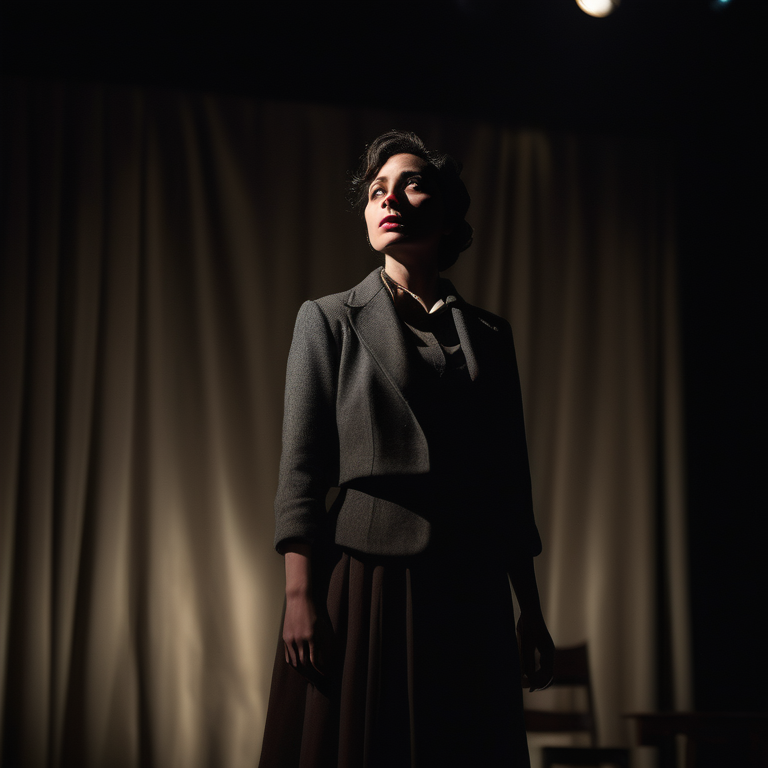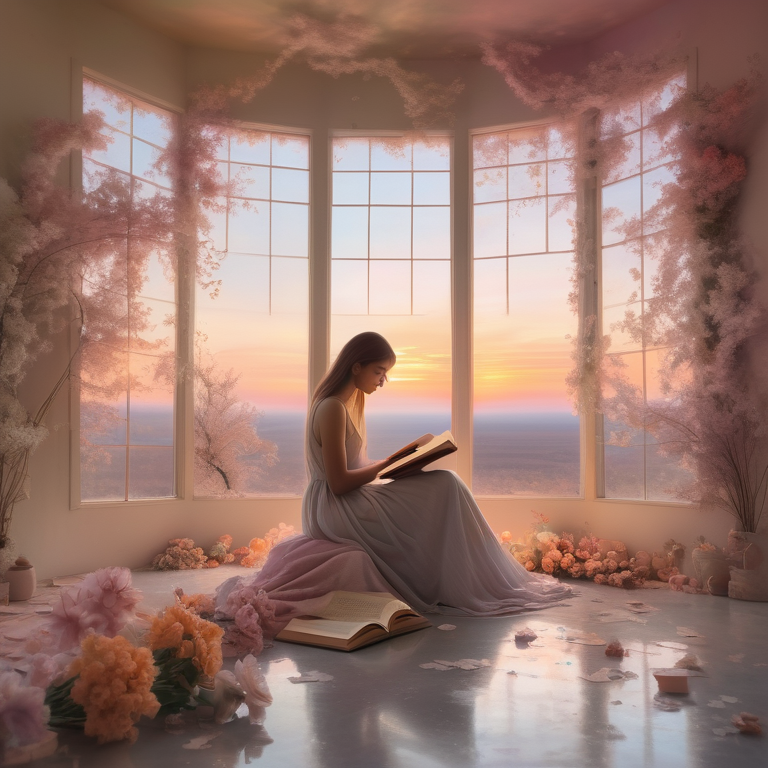Stages of Desire: Playwrights and Women’s Sexuality

Key Highlights
- Playwrights throughout history have been instrumental in shaping narratives around women’s sexuality.
- The portrayal of women’s sexuality in ancient plays set the foundation for future exploration of the topic.
- Pioneering female playwrights challenged societal norms and paved the way for more diverse narratives.
- Seminal works in theater have examined women’s sexuality from various perspectives, highlighting empowerment and struggle.
- Contemporary voices in theater continue to push boundaries and explore the complexities of women’s sexuality.
- The role of censorship and society in shaping narratives around women’s sexuality cannot be ignored.
Introduction
Playwrights have long played a significant role in shaping the narratives and conversations surrounding women’s sexuality. Through their works, they have challenged societal norms, explored the complexities of desire, and shed light on the struggles and triumphs of women in different eras. From ancient plays to contemporary works, playwrights have used their art to delve into the depths of women’s sexuality, ultimately impacting not only the theater but also wider conversations about gender and empowerment.
Historical Context of Women’s Sexuality in Drama
To understand the evolution of women’s sexuality in drama, it is crucial to consider the historical context in which these narratives were shaped. In the eighteenth century, theater in England was heavily influenced by the political context and societal climate of the time. Women’s roles in society were limited, and their sexuality was often suppressed or seen as a threat. However, playwrights of the era began to challenge these norms, using the theater as a platform to explore and question societal attitudes towards women’s sexuality. The plays of this period, such as those discussed in “The Politics of Desire,” provide valuable insights into the political context surrounding women’s sexuality and the impact it had on their lives.
The portrayal of women’s sexuality in ancient plays
Ancient plays laid the foundation for the portrayal of women’s sexuality in theater. Greek and Roman dramatists, such as Euripides and Aristophanes, depicted women with desires and agency, challenging societal expectations. These plays often explored themes of love, desire, and power dynamics, offering a nuanced depiction of women’s sexuality. The portrayal of women’s sexuality in ancient theater not only entertained audiences but also provided a reflection of the complexities of human nature. Through their works, playwrights of the time contributed to the ongoing dialogue about women’s sexuality that continues to this day.
Evolution through the Renaissance and modern era
As theater evolved through the Renaissance and into the modern era, the exploration of women’s sexuality became more nuanced and diverse. In the twentieth century, London became a hub for groundbreaking plays that pushed the boundaries of societal norms. Playwrights such as Janet Janet and Fanny Fanny tackled themes of desire, virginity, and the unmarried woman, challenging conventional notions of women’s sexuality. These plays not only entertained audiences but also sparked important conversations about gender, sexuality, and empowerment. With the portrayal of women as more than just the traditional roles of “saintly mother” or “pure virgin,” these plays opened up new possibilities for women to be seen as complex and multifaceted individuals.
Pioneering Female Playwrights and Their Influence
Female playwrights have played a crucial role in shaping the narratives around women’s sexuality. In a male-dominated industry, these women writers defied societal expectations and brought their unique perspectives to the forefront. Through their works, they challenged existing narratives, explored taboo topics, and paved the way for future generations of playwrights. Their influence extended beyond the theater, as their plays were published and widely read, contributing to a broader cultural conversation about women’s sexuality.
Key figures who addressed women’s sexuality
- Aphra Behn: Known as the first professional woman playwright, Aphra Behn addressed women’s sexuality in her plays, often featuring strong and complex heroines.
- Lillian Hellman: This influential playwright explored themes of female desire and empowerment in her works, challenging societal norms of the time.
- Caryl Churchill: Known for her experimental approach to theater, Churchill’s plays often depicted female characters grappling with their sexuality and exploring unconventional relationships.
- Sarah Kane: Kane’s provocative plays delved into themes of sexuality, violence, and power dynamics, sparking important conversations about women’s experiences.
Impact on societal views and theater
The exploration of women’s sexuality in theater has had a profound impact on societal views and the theater itself. By challenging traditional narratives and offering alternative perspectives, playwrights have sparked conversations and encouraged audiences to question societal norms. The portrayal of women’s sexuality on stage has the power to shape public opinion and challenge deep-rooted beliefs. Theater continues to be a platform for raising awareness, promoting dialogue, and advocating for change in how women’s sexuality is understood and discussed.
Examination of Seminal Works
To truly understand the impact of playwrights on women’s sexuality, we must examine some of the seminal works that have shaped the conversation. These plays, created by visionary dramatists, have challenged societal norms, explored the complexities of desire, and shed light on the struggles and triumphs of women. By analyzing these works, we gain insights into the evolution of women’s sexuality in theater and its influence on broader cultural conversations. From ancient Greek plays to contemporary masterpieces, these works have left an indelible mark on the theatrical landscape.
Analysis of groundbreaking plays
- “Lysistrata” by Aristophanes: This ancient Greek comedy challenged societal norms by depicting women who withhold sex to end a war, highlighting the power of female desire and agency.
- “A Doll’s House” by Henrik Ibsen: This iconic play explored the limitations imposed on women in the Victorian era and sparked a global conversation about gender roles and female autonomy.
- “The Vagina Monologues” by Eve Ensler: This groundbreaking play gave voice to women’s experiences, celebrating the diversity of female desire and challenging taboos around sexuality.
- “Top Girls” by Caryl Churchill: This play examined the sacrifices and struggles faced by women in the workplace, shedding light on the complexities of female ambition and sexuality.
Themes of empowerment and struggle
Many plays exploring women’s sexuality touch on themes of empowerment and struggle. By depicting the challenges faced by women in society and their journey towards self-discovery, these plays inspire and empower audiences. They shed light on the societal pressures and expectations placed on women, while also highlighting the resilience and strength of the female spirit. Through the medium of theater, these narratives provide a platform for women’s stories to be heard and celebrated, contributing to a broader cultural conversation about gender, empowerment, and equality. The play “Manwatching” by an anonymous female playwright is a prime example of this, as it tackles the taboo topic of female sexuality with levity and humor, ultimately empowering both the characters and the audience.
Contemporary Voices in Theater
In the twenty-first century, playwrights continue to explore and challenge narratives around women’s sexuality. Contemporary voices in theater, particularly in the UK, have brought fresh perspectives and diverse experiences to the stage. These playwrights tackle complex themes and push the boundaries of what is considered acceptable or taboo in discussing women’s sexuality, often drawing from their own experiences and higher education. Through their works, they invite audiences to engage with and question societal norms, opening up new possibilities for understanding and embracing diverse expressions of female desire.
Female playwrights of the 21st century
- Lucy Kirkwood: Known for her thought-provoking plays, Kirkwood explores themes of sexuality, power dynamics, and the female experience in works such as “The Children” and “Chimerica.”
- debbie tucker green: With her unique theatrical style, debbie tucker green addresses themes of sex, identity, and relationships in plays like “random” and “dirty butterfly.”
- Lynn Nottage: Nottage’s plays, including “Ruined” and “Sweat,” delve into the complexities of women’s lives, highlighting the impact of social and economic factors on their sexuality and agency.
- Ella Hickson: With plays like “Oil” and “The Writer,” Hickson challenges traditional narratives around women’s sexuality and explores the intersections of power, desire, and personal freedom.
Changing narratives and ongoing challenges
While progress has been made in the representation and exploration of women’s sexuality in theater, challenges still remain. Playwrights continue to face obstacles and biases when addressing these themes, as societal attitudes towards women’s sexuality can be deeply ingrained. However, changing narratives and evolving societal views offer hope for the future. The theater has the power to challenge and shape cultural conversations, and as more diverse voices are heard, the narratives around women’s sexuality will continue to evolve and reflect the experiences and desires of a broad range of women.
The Role of Censorship and Society
Censorship and societal attitudes play a significant role in shaping the narratives around women’s sexuality in theater. In England’s history, censorship laws have often restricted the exploration of taboo topics, including sexuality. This censorship has limited the representation of women’s sexuality on stage, perpetuating biases and reinforcing societal expectations. However, playwrights have consistently pushed against these limitations, using their art to challenge censorship and shed light on the complexities of women’s experiences.
Historical censorship of women’s sexual narratives
Throughout history, women’s sexual narratives in theater have faced censorship and restrictions. In the eighteenth and nineteenth centuries, societal taboos and moral codes heavily influenced the portrayal of women’s sexuality on stage. Melodramas often depicted women as innocent victims, reinforcing traditional gender roles and limiting the exploration of female desire. This censorship not only hindered the artistic expression of playwrights but also perpetuated societal norms and expectations. However, certain playwrights found ways to navigate these restrictions and subtly challenge the status quo, laying the groundwork for future generations to push against censorship and explore women’s sexuality more openly.
Modern-day challenges and controversies
Even in modern times, challenges and controversies surround the representation of women’s sexuality in theater. Society’s attitudes towards women’s bodies, desires, and agency continue to shape the narratives that are deemed acceptable on stage. Playwrights who tackle these themes often face criticism, backlash, and attempts at censorship. The controversy surrounding works such as “The Vagina Monologues” and “Blackbird” highlights the ongoing struggle to openly discuss and explore women’s sexuality. However, these controversies also serve as a reminder of the power of theater to provoke thought, challenge norms, and contribute to societal change.
Conclusion
Women’s sexuality in drama has been a powerful force throughout history, shaping societal views and challenging norms. From ancient plays to contemporary voices, female playwrights have courageously addressed themes of empowerment and struggle, influencing both theater and society. Despite historical censorship and modern challenges, these impactful narratives continue to spark important conversations about gender, empowerment, and identity. As we delve into the evolving landscape of women’s sexuality in theater, it’s crucial to acknowledge the trailblazing playwrights who have paved the way for diverse and inclusive storytelling. Share your thoughts on this fascinating journey below.
Frequently Asked Questions
Who is considered the first female playwright to address women’s sexuality?
The first female playwright to address women’s sexuality is Aphra Behn. As a pioneering woman in the theater industry, Behn’s plays often depicted strong and complex heroines who challenged societal expectations and explored themes of desire and agency.
How have LGBTQ+ narratives been integrated into modern plays about women’s sexuality?
Modern plays about women’s sexuality have increasingly embraced LGBTQ+ narratives, exploring diverse experiences of desire and identity. These plays shed light on the intersectionality of women’s sexuality, highlighting the experiences of queer women and broadening the conversation around women’s desires and relationships.
What role does feminist theory play in contemporary playwriting?
Feminist theory plays a significant role in contemporary playwriting, providing a framework for exploring and challenging societal norms and expectations around women’s sexuality. Playwrights draw on feminist theory to critique patriarchal structures, advocate for gender equality, and create narratives that celebrate female desire and agency.
How have playwrights historically addressed women’s sexuality in their works?
Historically, playwrights have addressed women’s sexuality in their works by portraying complex and multifaceted female characters. They have explored themes of desire, autonomy, and societal expectations, challenging traditional notions of women’s sexuality and shedding light on the diverse experiences of women.
Are there any contemporary playwrights who are known for exploring themes of women’s sexuality in their plays?
Yes, there are several contemporary playwrights who have gained recognition for their exploration of themes related to women’s sexuality. Playwrights such as Lucy Kirkwood, debbie tucker green, Lynn Nottage, and Ella Hickson have created works that delve into the complexities of female desire, relationships, and societal expectations.
How can the portrayal of women’s sexuality in theater impact conversations about gender and empowerment?
The portrayal of women’s sexuality in theater has the power to impact conversations about gender and empowerment by challenging societal norms, broadening perspectives, and providing a platform for marginalized voices. By depicting diverse experiences of women’s sexuality, theater can contribute to a more inclusive and empowering understanding of gender and desire.





